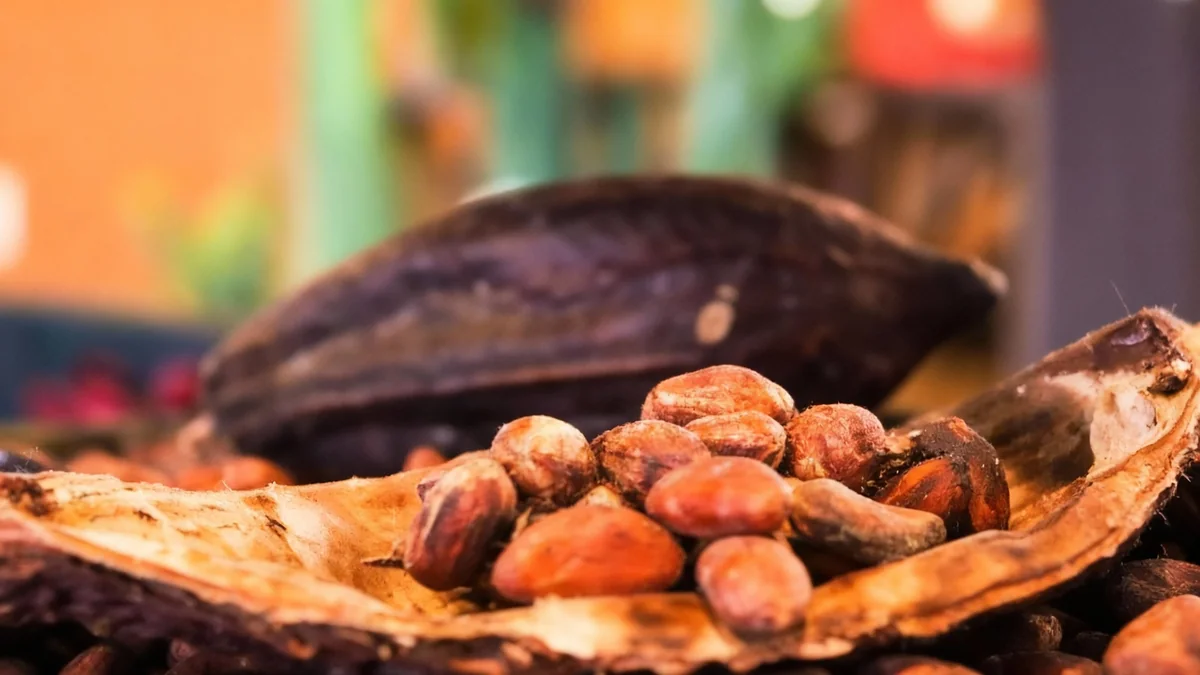The global cocoa market is currently navigating a period of significant uncertainty, with conflicting signals pulling prices in opposite directions. While persistent supply chain disruptions and regulatory changes in Europe suggest tighter availability, recent data reveals a sharp decline in consumer demand for chocolate, creating a complex picture for the commodity's future.
Recent trading sessions have reflected this volatility, as market participants weigh the impact of a historically poor 2023/24 harvest against signs of a potential supply recovery and weakening global consumption.
Key Takeaways
- Global cocoa supply remains tight following a major deficit in the 2023/24 season, the largest in over 60 years.
- Consumer demand is falling, with chocolate sales volumes in North America dropping over 21% and cocoa grindings declining in Europe and Asia.
- Production outlooks for the 2024/25 season are mixed, with promising signs in the Ivory Coast but projected declines in Nigeria.
- Upcoming EU deforestation regulations are adding another layer of complexity and potential cost to the supply chain.
A Market Pulled in Two Directions
The cocoa market is caught in a classic economic standoff. On one side, supply-side pressures continue to support prices. The International Cocoa Organization (ICCO) recently confirmed that the 2023/24 season ended with a staggering global deficit of 494,000 metric tons.
This shortfall has pushed the global cocoa stocks-to-grindings ratio—a key measure of market tightness—down to 27.0%, its lowest level in 46 years. These figures highlight the severe impact of poor weather and crop disease in West Africa, which produces the majority of the world's cocoa beans.
On the other side, the high prices resulting from this scarcity are beginning to impact consumption. Chocolate manufacturers have passed on higher costs to consumers, leading to a noticeable drop in sales and a reduction in the amount of cocoa being processed, a process known as grinding.
The Consumer Response
The evidence of demand destruction is becoming clearer. In North America, sales volume of chocolate candy fell by more than 21% in the 13 weeks ending September 7 compared to the same period last year, according to data from research firm Circana.
This trend is not isolated. The Cocoa Association of Asia reported that third-quarter cocoa grindings plunged by 17% year-over-year, reaching a nine-year low. Similarly, the European Cocoa Association saw a 4.8% decline in Q3 grindings, marking the lowest third-quarter figure in a decade.
Global Grindings Slump
- Asia: Q3 grindings down 17% year-over-year.
- Europe: Q3 grindings down 4.8% year-over-year.
- North America: Reported Q3 grindings rose 3.2%, but the data was skewed by the inclusion of new reporting companies.
Supply Chain Headaches Persist
While demand weakens, fundamental supply issues remain a primary concern for the market. In the Ivory Coast, the world's largest producer, farmer shipments to ports for the new marketing year (from October 1 to 19) were down 31% from a year ago.
Adding to the pressure, cocoa inventories monitored by ICE in U.S. ports recently fell to a seven-month low. This indicates that available stockpiles in key consumer markets are shrinking.
Regulatory Hurdles in Europe
A new regulatory challenge is also on the horizon. The European Union is moving forward with strict anti-deforestation laws that will require companies to prove their cocoa imports did not originate from deforested land. The EU recently proposed only a six-month delay for enforcement, rather than the one-year period previously discussed.
"These traceability requirements could significantly tighten supplies, as products from non-compliant farms will be barred from the EU market, one of the world's largest chocolate consumers."
This regulation is expected to add costs and complexity to the supply chain, potentially favoring larger, well-resourced producers who can afford the necessary tracking technology and documentation.
Looking Ahead: A Glimmer of Hope?
Despite the grim supply data from the past season, there are some early, tentative signs of improvement for the upcoming 2024/25 crop. The ICCO projects a return to a global surplus of 142,000 metric tons for the 2024/25 season, which would be the first surplus in four years.
This forecast is supported by some positive developments on the ground. Chocolate maker Mondelez noted that recent cocoa pod counts in West Africa are 7% above the five-year average and significantly higher than last year. Farmers in the Ivory Coast have also expressed optimism about the quality of the main crop harvest, which has just begun.
Mixed Signals from West Africa
While the Ivory Coast shows potential for a rebound, the outlook is not uniform across the region. Ghana, the second-largest producer, has seen a recent surge in cocoa deliveries to its ports. However, Nigeria, the fifth-largest producer, projects its 2025/26 cocoa production will fall by 11% year-over-year.
The cocoa market remains on a knife's edge. The coming months will be critical in determining whether a potential recovery in West African production can offset the lingering effects of the recent supply crisis and stabilize prices, or if continued weakness in consumer demand will ultimately drive the market lower.





